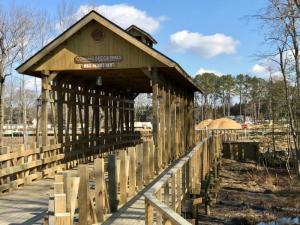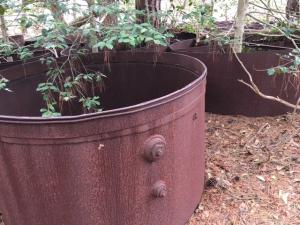New trails bring a sense of discovery with them
People see, hear and smell new things when they drive new roads, or walk or bicycle on new trails. With the experience comes a sense of discovery which helps stretch the brain and its senses.
The new trail being completed between Lewes and Minos Conaway Road – part of the ultimate Lewes to Georgetown rail trail - goes across upper reaches of Canary Creek that most people haven’t seen before. It goes along fields with horses and parts of communities that also have been off the beaten path for years.
Their noses will tell people they’re nearing the fresh baked goods of Old World Breads in beautiful downtown Nassau.
Their ears will tell them when they’re riding past the busy trucks and steadily humming cement-producing machinery at Atlantic Concrete. And their ears and eyes will also tell them that they are passing – thankfully and safely beneath – eternally busy Route 1 at the Nassau bridge.
The new trail, which connects several different communities along the alignment, is already popular even though it hasn’t officially opened. Contractors have been patient with the walkers and cyclists who are anxious to take advantage of their handiwork.
One community very much in the throes of development is already taking advantage of the trail. The Ocean Atlantic development called Covered Bridge Trails is located behind the homes of Dutch Acres and St. Jude the Apostle Catholic Church. The work being done there was out of sight until the trail started attracting riders and walkers to the area. Now those people have a front-row seat on the action.
A big part of that residential development involves the cleanup of what in the past has been known as the Hudson Pit. Preston Schell of Ocean Atlantic provided some of the environmental history of the site that was part of a permit application report.
“Prior to the late 1950s,” according to the report, “the property was believed to have been a railroad off-loading station for stone. The site was historically utilized as a borrow pit with excavated materials sold as fill material. The excavated portions of the pit were reportedly backfilled with stumps, logs, construction debris, and other inert materials. DNREC authorized disposal of oil sands generated from beach cleanups of area beaches between November 14, 1977 and December 10, 1977 on the Hudson Pit Site.”
I can remember a beach cleanup from about that time that involved oil that came ashore, perhaps from a vessel cleaning its bilges not far off the coast. Sandy tar balls resulted from that mess. They may have been what was moved to the Hudson Pit.
When Schell made his pitch for development of the site, cleaning up a polluted site was part of his reasoning. “We’ve cleaned up two small contaminated sites that were identified,” said Schell.
“One involved oily sands and the other showed traces of arsenic. We determined the arsenic site wasn’t even on the land we purchased. It was on adjacent property, but we worked with the property owner and cleaned it up anyway. That completed Phase One of the cleanup which has been done in close concert with state environmental officials.”
He said Phase Two of the cleanup has now started and includes removing piles of old tires, and the stumps, logs and construction debris mentioned in the environmental report.
Schell said there’s a lot of concrete rubble in there as well. “We have contracted for a concrete grinder to come in for that. We will be recycling it for roadwork in the community.”
Throughout the cleanup, Schell said required water testing has been ongoing. “We’ve had to do that even before we could put in our water features. So far there have been no problems.”
He said sitework on the property is costing two times the normal amount because of the cleanup.
The new Lewes-Georgetown Trail has been part of the community plan from the beginning, said Schell. “We see the trail and proximity to Lewes as selling points.” He said residents of Covered Bridge Trails will use a new road that enters through the community from Tulip Drive and through the covered bridge.
Commercial and construction vehicles, he said, are using an easement road that connects the community to Old Orchard Road, parallel to and between the trail and the concrete plant.



























































